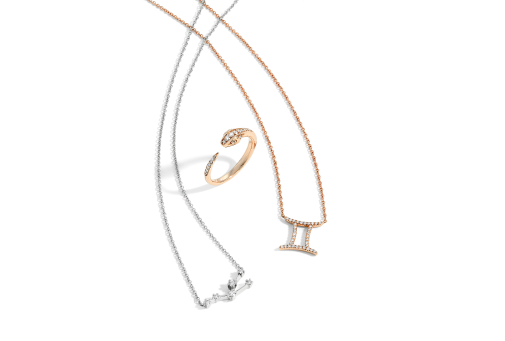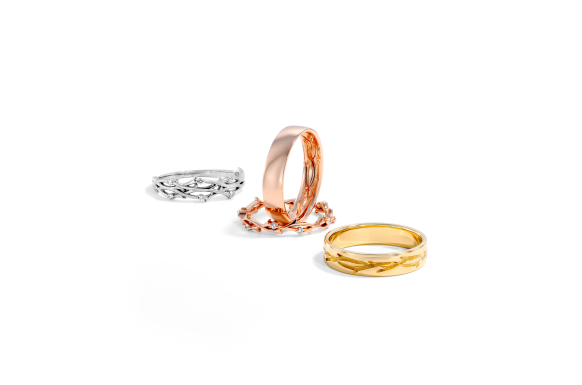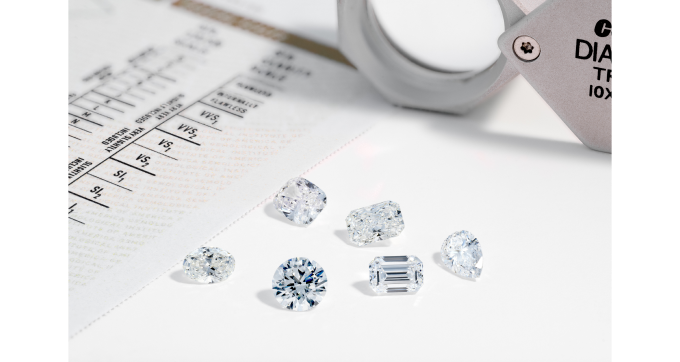Anatomy
Education Center
Education CenterEverything You Need to Know About Diamond Anatomy
Although each diamond is unique, they all share the same anatomy. This anatomy affects sparkle, perceived size, and everything else that matters about a diamond. This article will go over the eight main components of a diamond's anatomy. Understanding these will help you find quality stones using more than just the 4C's.
What is Diamond Anatomy?
Each diamond cut (and shape) is unique. However, they are all made up of the same sections. How these sections come together determines how much light enters and is reflected from the diamond. A diamond with good anatomy will have incredible sparkle, and vice versa.
A diamond’s cut grade is one way to evaluate the anatomy of a diamond. However, cut grade doesn’t tell you everything. Understanding diamond anatomy will help you pick a better diamond (and might even save you a bit of money).
The Building Blocks of a Diamond
Table |
The table is the largest facet of the diamond. It's located front and center across the top of the stone. The average size is measured as a percentage of the total girdle diameter. |
Crown |
A diamond's crown is the angled area surrounding the table. Crown Height: Measured from the girdle to the table Crown Angle: Formed where the girdle and bezel facets join. This angle has a substantial effect on the appearance of a diamond and directs the light as it enters and exits the stone. |
Girdle |
The girdle refers to the middle portion of the diamond at its widest point. This is also known as its setting edge. An unnecessarily thick girdle will add undesired weight to the diamond. A thin girdle will give the stone a fragile edge that is vulnerable to chipping. A medium or slightly thicker girdle is ideal. |
Diameter |
The Diameter refers to the total width of a polished stone at its widest point. This is sometimes called the girdle diameter. |
Pavilion |
The pavilion is the lower portion of the diamond from just below the girdle to the culet. Pavilion Depth: If the pavilion is cut too shallow or too deep, it will allow too much light to escape through the bottom and sides. An ideal cut will maximize the light reflected upward through the crown Pavilion Angle: This angle will help determine the diamond's overall brightness. |
Lower Girdle/Half Facet Length |
This ratio is determined by measuring the length of the lower girdle facets with respect to the pavilion length. Controls the contrast and brilliance of a diamond |
Culet |
The culet (cue-let) is a tiny facet located at the bottom of a diamond. Ideally, this facet will not be visible to the naked eye Large culets like those prominent in vintage stones are not preferred as they allow light to escape from the bottom of the stone, affecting the overall brilliance. |
Total Depth |
Depth refers to the measurement from the table's surface to the culet. |
Conclusion
Taking into account the cut of a diamond is an essential factor when choosing a diamond. It's the secret behind its sparkle. Our diamonds are selected for their fire, brilliance, and scintillation, and we know that cut is critical above all else.
So how do you like the view from the table? Now that you know the key components that come together to make a diamond shine, you can feel confident asking for the cut that's right for your crown… or your engagement ring, which probably makes more sense.



